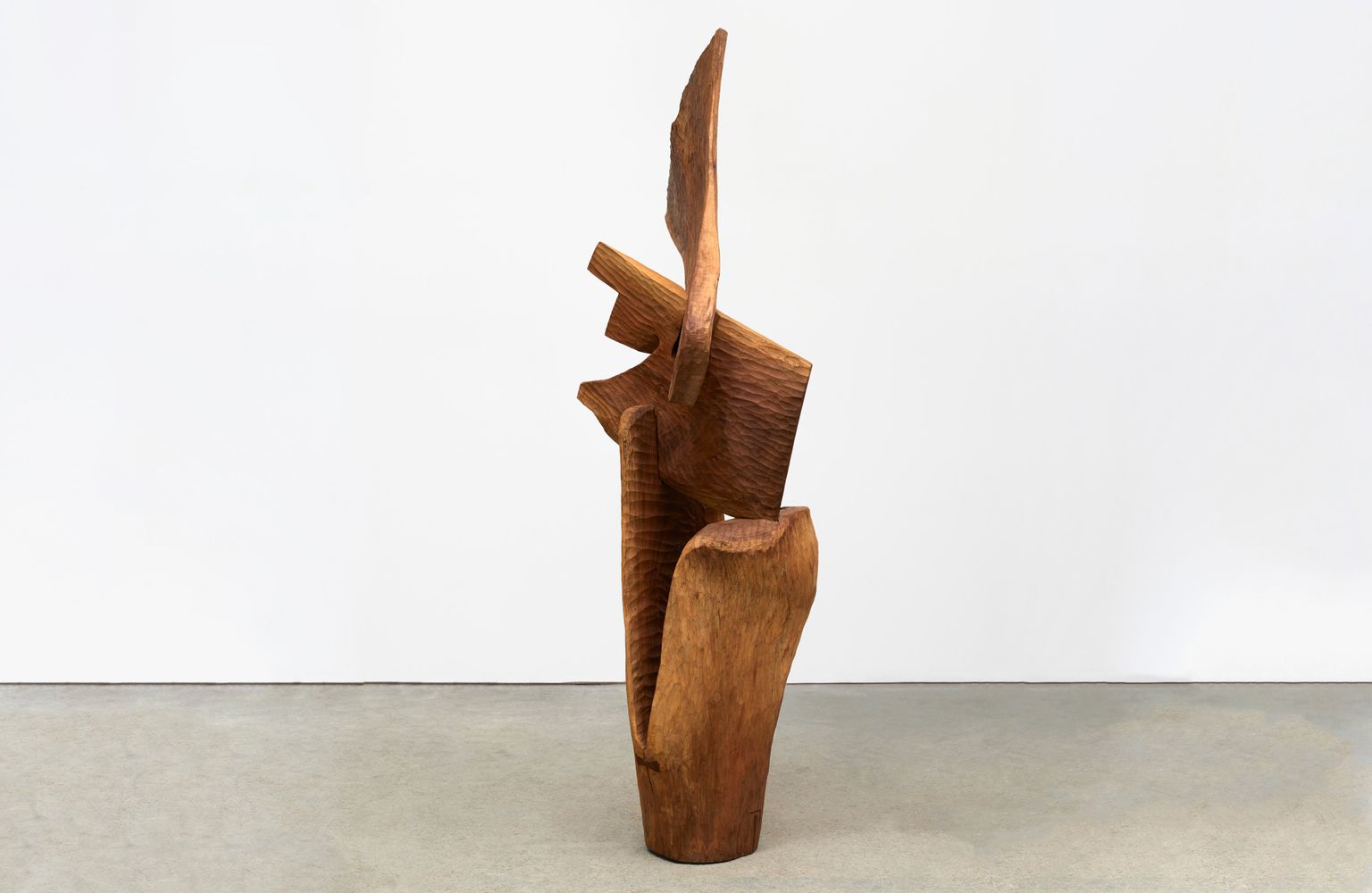August 25, 2021

Thaddeus Mosley, Opposing Parallels – Blues Up and Down for G. Ammons and S. Stitt (2015). Courtesy the artist. Photo: Karma, New York.
At 95 years of age, self-taught sculptor Thaddeus Mosley is soon to receive a prestigious exhibition at the Baltimore Museum of Art in Maryland (17 October 2021–27 March 2022). Titled Forest, it will be his first solo museum exhibition in over 10 years.1
Instantly recognisable, Mosley’s work is characterised by gorgeously carved and balanced structures that are dense yet delicate and often gravity-defying. Most of his sculptures are deftly hand-crafted using a mallet, chisel, and joinery techniques, utilising wood salvaged from felled trees in Pittsburgh, Pennsylvania, where the artist lives.
The intricate, biomorphic sensibilities of his practice have been compared to the works of masters such as Constantin Brâncuși, Isamu Noguchi, and Alberto Giacometti2, who Mosely has named as references, while also taking inspiration from the African sculptures in his collection made by the Dogon, Senufo, and Dan peoples.
Forest, which includes five recent works on display in the John Waters Rotunda of the museum, takes its name from ‘the forest’—painter Sam Gilliam‘s nickname for Mosley, who describes him as ‘keeper of old trees, round trees, big trees, heavy trees’.3
Standout works include Opposing Parallels – Blues Up and Down for G. Ammons and S. Stitt (2015), made up of three interlocking and embracing wooden elements. The vast and elegant piece takes its name from the legendary American saxophonists Gene Ammons and Sonny Stitt.
Mosley has compared his improvisational technique to the spontaneity of Jazz—he was raised in a family of musicians—and has called his work ‘animated sculpture’.4 He once said, ‘I use different widths and depths of gouge to make different marks. Shadows are the means by which one can appreciate the rhythms of chisel marks.’5
Describing Mosley’s works in The New York Times, Jillian Steinhauer wrote they ’embrace and transcend their material… Mosley creates objects that feel natural yet mysterious, like handmade totems embedded with metaphysical knowledge.’6
Last September, Mosley showed his sculptures in Frieze Sculpture at Rockefeller Center, New York, alongside works by Ghada Amer, Beatriz Cortez, Lena Henke, and Camille Henrot.
Mosley’s monumental contributions, gloriously titled Illusory Progression, True to Myth, and Rhizogenic Rhythms, consisted of laboriously constructed bronze casts taken from his previous wooden sculptures. Rising into the Manhattan skyline, their seemingly precarious but balanced, organic forms gently mocked the rigid expanse of their surroundings.
Perhaps shockingly, Mosley is yet to receive a solo exhibition or enter any public collections outside the United States. Surely, now is the time for his important contributions to postwar abstraction to become more known? As John Yau emphasised recently, ‘He did not need the art world’s approval to keep going, but the art world certainly needs him.’7
1 https://karmakarma.org/artists/thaddeus-mosley/bio/
2 https://hyperallergic.com/547004/thaddeus-mosley-at-karma/
3 Press Release (email)
4 https://www.frieze.com/article-embodying-anew-2021-review
5 https://carnegiemuseums.org/magazine-archive/1997/mayjun/feat3.htm
6 https://www.nytimes.com/2020/07/01/arts/design/art-gallery-shows-to-explore-from-home.html?searchResultPositi on=1
7 https://hyperallergic.com/547004/thaddeus-mosley-at-karma/



